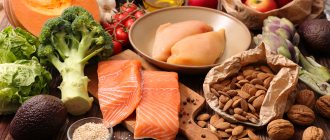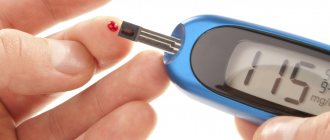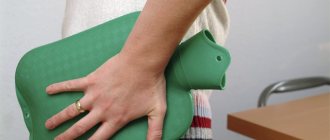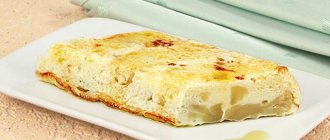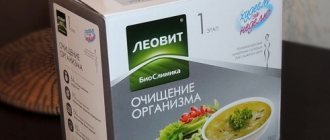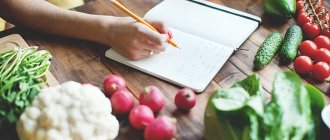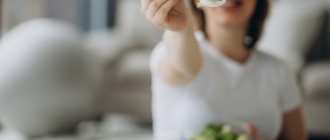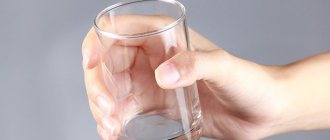Diet number 9 for diabetics
In some countries, diet table number 9 is traditionally used for the treatment and prevention of diabetes. It can be prescribed for mild to moderate diabetes mellitus in the absence of concomitant diseases of internal organs and acidosis. With this nutritional system, the protein content exceeds the physiological norm, but the amount of carbohydrates and fats (mainly animals) is moderately limited. Easily digestible carbohydrates are excluded. The diet contains substances that have a lipotropic effect.
The diet should contain a lot of vegetables. Cholesterol-rich foods and salt are limited when following the diet table number nine. Sweets and sugar are practically excluded - the exact norm is regulated by the attending physician. Instead of sugar, artificial and natural substitutes are used. Mostly food is consumed baked or boiled. Fried or stewed foods are allowed on the table. The food temperature is normal.
The diet involves 5-6 meals per day. Carbohydrates are distributed in equal portions throughout the day. Such a nutritional system prevents lipid metabolism disorders, helps normalize carbohydrate metabolism, and helps determine carbohydrate tolerance.
Content:
Diet 9 during pregnancy and lactation
Diabetes mellitus can have a latent form and first manifests itself during pregnancy . This is true diabetes mellitus . Gestational diabetes may occur , which appears during pregnancy due to a decrease in tissue sensitivity to insulin. After delivery, there is a possibility of normalization of carbohydrate metabolism. However, there is a risk of developing diabetes in the future.
High glucose levels pose a danger to mother and child: risk of miscarriage , pyelonephritis , fundus vascular complications and complications during childbirth. Therefore, it is so important for pregnant women to regularly monitor sugar levels and follow nutritional recommendations if they increase.
- The diet completely excludes “simple” carbohydrates, which cause a sharp increase in blood sugar, and limits the amount of complex carbohydrates. Eliminate sweets, sugary carbonated drinks, white bread, grapes, bananas, sweet juices and dried fruits. Eat foods that contain fiber, which slows down the flow of glucose into the blood. Its sources are vegetables and unsweetened fruits.
- Pasta and potatoes should be present in small quantities.
- It is recommended to eat every two hours. There should be three main meals and two additional ones. After dinner, you can drink half a glass of kefir or eat half an apple.
- Throughout the day, constantly measure your glucose level after meals (to do this, you need to purchase a glucometer).
- Eliminate fatty foods and fried foods, fast food products. It is recommended to avoid sausage and smoked meats.
- Do not limit fluid intake.
- Steaming or stewing using vegetable oil is preferred.
Compliance with these recommendations is necessary even after pregnancy , for at least two months, followed by a blood sugar examination and consultation with an endocrinologist.
Diet No. 9 for diabetics: what is possible, what is not?
While following the diet, the following foods are allowed:
- Unsweetened compotes using sugar substitutes, juices from unsweetened fruits, vegetables and berries, coffee with milk, rosehip decoction.
- Flour non-food products, wheat, protein-wheat, rye bread made from second-grade flour. The daily norm is about 300 g.
- Unsalted ghee and butter.
- Low-fat and half-fat cottage cheese, unsalted cheese, fermented milk products and milk, sour cream in small quantities.
- Lean meat.
- Canned fish in tomato or its own juice, low-fat fish.
- Eggs in the form of omelettes or soft-boiled (one or two eggs per day).
- Low-fat sauces based on weak mushroom, fish and meat broths.
- Porridges made from pearl barley, oatmeal, barley, millet and buckwheat.
- Cooked and raw vegetables - legumes, eggplants, cabbage, lettuce, tomatoes, cucumbers. In limited quantities carrots, beets, green peas, potatoes.
Prohibited for use:
- Cakes, puff pastry and pastry products.
- Sweet curd cheeses, cream, salty cheeses.
- Fatty, strong broths.
- Milk soups with noodles, rice, semolina.
- Sausages, sausages, smoked meats.
- Cooking and animal fats, pickled and salted vegetables.
- Dates, figs, bananas, raisins, grapes.
- Ice cream, sweets, jam.
- Sweet juices, lemonades and sparkling waters with sugar.
- Alcoholic drinks.
Types of table No. 9
The basic diet is prescribed for a short period of time in order to select the dose of drugs and normalize sugar levels. For patients with type 2 diabetes mellitus with normal weight, such a table is recommended throughout their lives. There are other varieties of the diet.
9A
The table is recommended if the patient is obese. Food is consumed 6 times a day, wisely distributing carbohydrates between meals. The diet is similar to the main table No. 9. The difference is a significant calorie restriction.
With high body weight, the body needs half the normal amount of calories. The diet should not exceed 1650 kcal per day.
9B
The diet is prescribed to patients with severe insulin-dependent diabetes. It is characterized by a higher protein content and an increase in the total calorie content of the diet. The patient is allowed to use sweeteners. Carbohydrates are consumed in the morning and afternoon.
Recommended and prohibited foods coincide with diet table 9. It is acceptable to eat pasta and herring soaked in water. You need to reduce your egg consumption by half.
Diet menu No. 9 for the week
An approximate daily diet for diet table number nine might look like this:
- First breakfast - tea, crumbly buckwheat porridge, low-fat cottage cheese with milk.
- Second breakfast is a decoction of wheat bran.
- Lunch – vegetarian cabbage soup made from fresh cabbage with vegetable oil, stewed carrots, boiled meat with milk sauce.
- Afternoon snack – fresh apples.
- Dinner – boiled fish baked in milk sauce, tea, cabbage schnitzel.
- Kefir before bed.
Sample weekly diet:
| Days of the week | Meal time | Name of dishes |
| First | Breakfast | Cottage cheese with berries (low fat) |
| Lunch | A glass of kefir | |
| Dinner | Stewed vegetables, baked lamb, vegetable soup | |
| Afternoon snack | Cucumber and cabbage salad with olive oil | |
| Dinner | Steamed vegetables, grilled fish | |
| Second | Breakfast | Buckwheat porridge with milk |
| Lunch | A couple of apples (green) | |
| Dinner | Compote of dried fruits without added sugar, boiled beef, borscht without meat | |
| Afternoon snack | Rose hip decoction | |
| Dinner | Fresh vegetables, boiled fish | |
| Third | Breakfast | Cottage cheese casserole |
| Lunch | Rosehip decoction (fruit) | |
| Dinner | Fresh vegetables, fish cutlets, cabbage soup (without adding meat) from fresh cabbage | |
| Afternoon snack | Boiled egg | |
| Dinner | Stewed cabbage, steamed meat cutlets | |
| Fourth | Breakfast | Vegetables and omelet |
| Lunch | Drinking yoghurt | |
| Dinner | Stuffed peppers, cream of broccoli soup | |
| Afternoon snack | Carrot casserole with cottage cheese | |
| Dinner | Grilled vegetables, chicken kebab | |
| Fifth | Breakfast | Apple, millet porridge |
| Lunch | A couple of oranges | |
| Dinner | Pearl barley porridge, meat goulash, fish soup | |
| Afternoon snack | Bran, a glass of kefir | |
| Dinner | Baked asparagus, buckwheat porridge, meat cutlets | |
| Sixth | Breakfast | Apple, bran |
| Lunch | Boiled egg | |
| Dinner | Vegetable stew with pieces of meat | |
| Afternoon snack | Celery stalk and tomato salad | |
| Dinner | Lamb stewed with vegetables | |
| Seventh | Breakfast | Yogurt and cottage cheese (low fat) |
| Lunch | Grilled chicken breast | |
| Dinner | Apple and celery stalk salad, meat goulash, vegetable soup | |
| Afternoon snack | Berries | |
| Dinner | Steamed green beans, boiled shrimp |
It is necessary to exclude everything fried, spicy, salty and smoked from the diet. Diet table No. 9 is prescribed and regulated by a doctor.
Excluded foods and dishes of the diet table No. 9
From the diet you should exclude flour products made from premium wheat flour, baked goods, chocolate, cocoa, coffee, jam, honey, confectionery, bananas, grapes, raisins, figs, fatty meat, poultry, lard, liver, cooking fats, strong meats , fish and mushroom broths, salted fish, smoked meats, rice and semolina, fatty and sweet dairy products (baked milk, cream, fermented baked milk, sweet yoghurts), pickles, canned food, marinades, savory snacks, seasonings, sauces, herbs and spices. Sweet and alcoholic drinks are also excluded.
Diet recipes No. 9
Pike perch in Tatar style.
Ingredients: 5 g parsley, half a lemon, 10 g olives, 5 g capers, 30 g sour cream, 50 g onions, 30 ml olive oil, 150 g pike perch. Pour olive oil into the bottom of the pan and place the fish pieces. Pour the onion juice over the pike perch, cover the pan and place in the oven. After the fish has warmed up, pour sour cream over it and cook over low heat. Add lemon, olives, capers, stir, simmer for a while and serve with chopped parsley.
Cod with lemon juice
. Ingredients: 20 g green onions, 10 g parsley, 1/3 lemon, 30 ml olive oil, 150 g cod. Soak the cod in water for 24 hours, peel and cook. Drain the water, put the cod in a pan, add salt, onion, parsley, olive oil. After the fish is soaked in oil, pour a little lemon juice over it and cook over low heat for 20-25 minutes.
The right way out of the diet
Basic rules for quitting diet table No. 9:
- There is no need to immediately switch to large portions, even if we are talking about healthy food.
- Preference should be given to fruits and vegetables.
- You can increase the amount of lean fish.
- Fats and carbohydrates are introduced very slowly.
- Don't get carried away with chocolate and fast food. It is better to avoid these products forever.
- After leaving the diet, you should not engage in intensive training. Light exercise and exercise in the morning are suitable.
- We must not forget about water. It is important to continue drinking up to 2 liters per day.
- Don't overeat before bed.
If blood counts are normal, after 2-3 weeks add one piece of bread every 7 days. It corresponds to 14-15 g of carbohydrates. Over the next 2 months, the diet is expanded by 12 bread units, then another 4 are added. Further innovations are carried out after a year.
Diet No. 9 for children
For children with diabetes, six meals a day are provided hourly. Deviations from the meal schedule should not be more than 10-20 minutes. Products containing slowly and difficult to digest carbohydrates are introduced into the diet. When preparing mousses, compotes and jellies, you can use sugar substitutes. Children have a hard time accepting the complete absence of sweets, so the use of fructose is recommended. In agreement with the doctor, the child can be transferred to an adult diet corresponding to the diet of table number nine.
Author of the article:
Kuzmina Vera Valerievna |
Endocrinologist, nutritionist Education: Diploma of the Russian State Medical University named after. N.I. Pirogov, specialty “General Medicine” (2004). Residency at the Moscow State Medical and Dental University, diploma in Endocrinology (2006). Our authors
Features of diet table No. 9
The main task of the diet is to make the menu as healthy as possible and limit harmful fats and fast carbohydrates. The main instructions boil down to the following rules:
- They feed in small portions every 3 hours.
- 1 meal does not exceed 300 g.
- Calorie content – 23,000 kcal per day.
- The food is stewed and boiled, cooked in a double boiler.
- Drink more liquid – up to 2 liters per day.
- Avoid all sugar-containing products.
- The amount of salt is up to 12 g per day.
- Alcohol, salted foods, smoked foods, marinades, fried and spicy foods are prohibited.
- The main emphasis is on fresh fruits and vegetables, dairy products.
Normally, substances should be distributed as follows:
- protein – 100 g;
- carbohydrates – no more than 300 g (porridge, vegetables and fruits);
- fats – 80 g.
It is recommended to adhere to a certain energy value at each time of the day:
- 20% – after waking up;
- 10% – second breakfast;
- 30% – lunch meal;
- 10% – afternoon snack;
- 20% – evening;
- 10% - before bed.
In case of obesity, the daily calorie intake and the amount of carbohydrates can be reduced.
Recipes
These are the recipes you can prepare for table 9 for the week.
Vegetable Salad
- One cucumber
- One tomato
- One bell pepper
- Olive oil
Cut all the ingredients into cubes (the cucumber can be peeled), put it in a salad bowl and season with olive oil.
Bran decoction
- Two hundred grams of bran
- Liter of water
- A tablespoon of honey
Pour the bran with a liter of water brought to a boil, then put it on the stove and cook for another hour. After this, strain the resulting broth and add a tablespoon of honey or lemon juice.
Cabbage schnitzel
- Head of cabbage
- Two eggs
- Salt
- Breadcrumbs or flour
We separate the forks into leaves, put them in boiling salted water and cook until soft. Then take it out, cool it and fold it 4 times like a regular sheet. Heat vegetable oil in a frying pan. Dip the schnitzel in the egg, then roll it in breadcrumbs and fry until golden brown on one side and the other.
Interesting: diet 13 according to the Pevzner system, what does it include?

